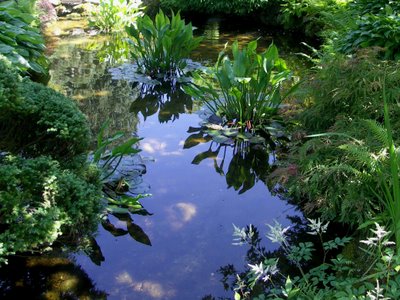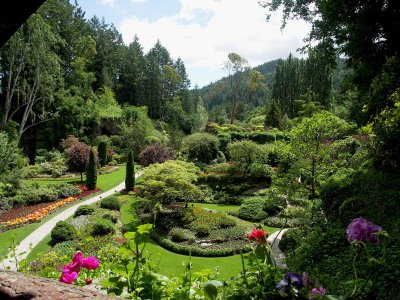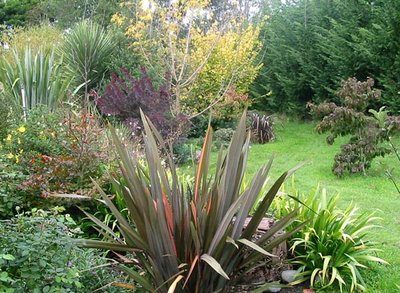Harmonious Garden

The principles of harmony and contrast can be used in designing a garden either independently or combined. There can be harmony or contrast between groups of colours, light and shade, form and line.

A harmonious picture can most often be achieved by grouping together partially similar elements -- in terms of colours or shapes, for instance, various shades of green or a repetition in various sizes of the same shape of plants. Basically harmony is reptition, but never exact reptetition; it permits small changes.

Also, a harmonious picture may be formed by changing the grouping of identical elements, such as having one species of plants concentrated in thick compact groups in one part of hte garden, but spaced out or even single specimens in another part. Harmonious compositions give an impression of calm bacause they are free of sudden changes, contrasts and tension.

Contrast can be attained by grouping opposites together, whether the opposite factor be one of size, shape, colour, structure, light and shade, the system of lines or whatever. Contrast is one of the most powerful means of expression, as it attracts attention and enlivens and brightens the composition. That is why shady areas should be alternated with well-lit ones, light-coloured statues placed in front of dark backgrounds and so on. It is also effective to combine contrasts of stillness and movement that show up best on close observation, such as the movement of a frothy waterfall descending on the calm surface of a pond.

The incorrect or excessive use of contrast, however, leads to disquiet, fragmentation and lack of truth. Both harmony and contrast must be used in reasonable measure. An excess of harmony makes the composition dull, an excess of contrast makes it confused and breaks up the view.








0 Comments:
Post a Comment
<< Home